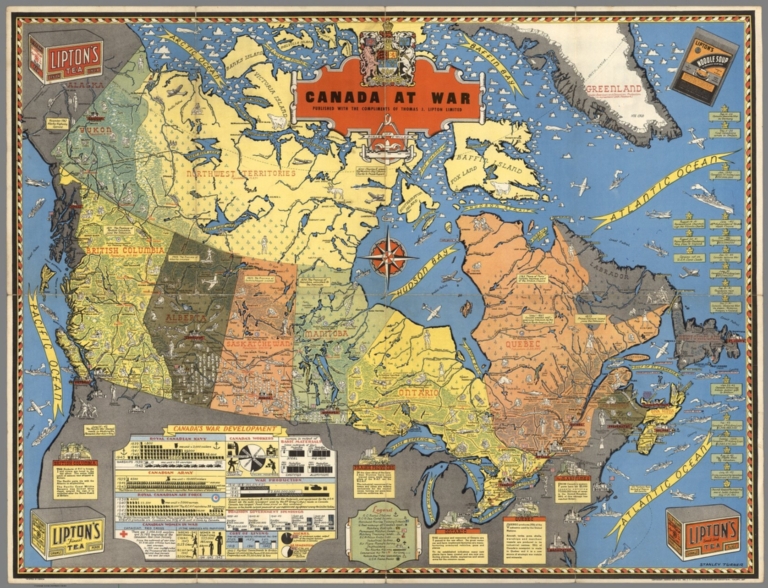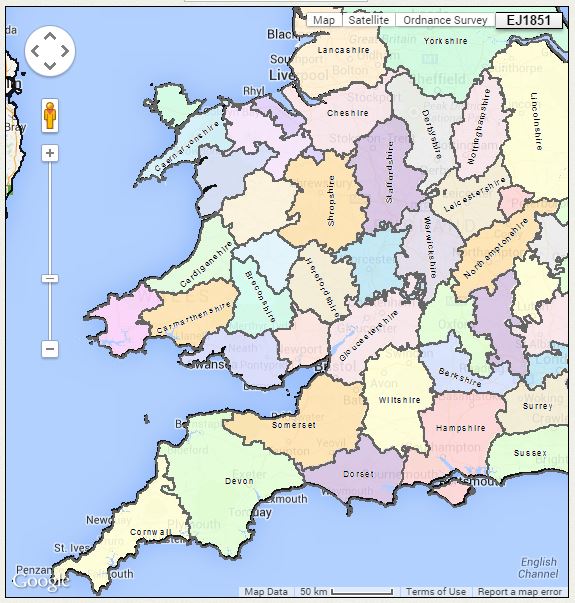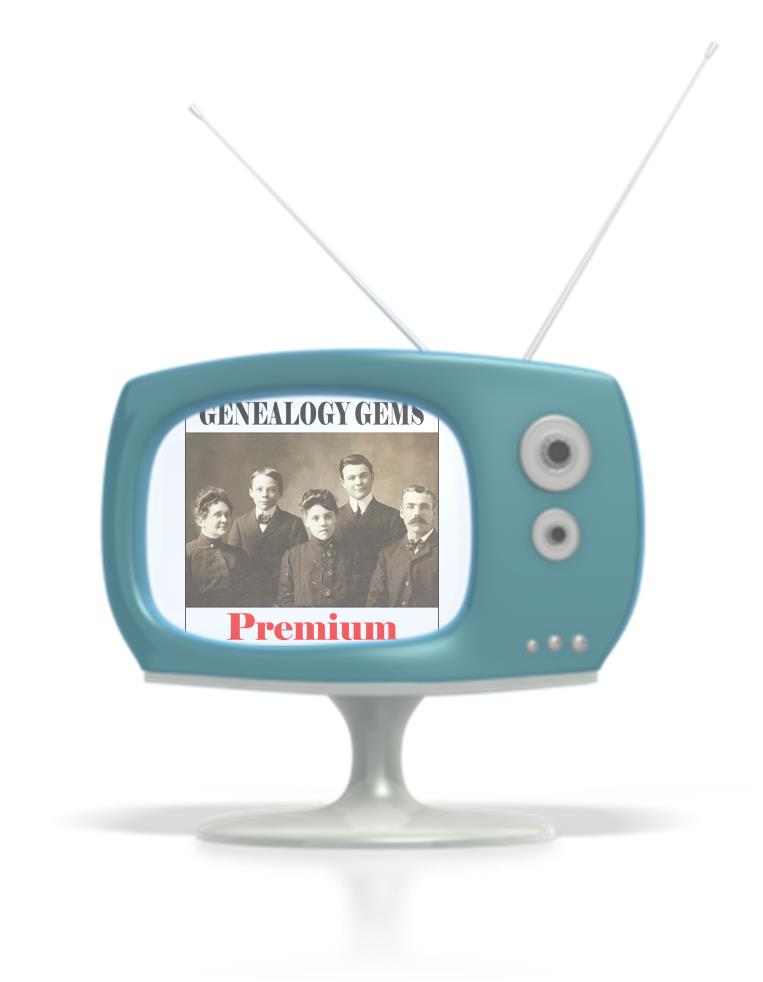Action-Packed WWII Maps Helped Homefront Families Follow the War

Canada at War by Stanley Turner, 1944. Online at the David Rumsey Map Collection. Click on image for full citation and to access image.
During World War II, millions of people anxiously followed the progress of battles and troop movements that affected their loved ones. Artists and map-makers stepped up to provide colorful, action-packed maps.
Toronto artist Stanley Turner was one of these. He created a series of maps between 1942 and 1945 that were printed and licensed as promotional giveaways to businesses in Canada and the U.S. Today you can find Turner’s maps digitized at the David Rumsey Map Collection.
Stanley wasn’t the only one making these beautiful maps. Read about Richard Eddes Harrison and the big changes in popular cartography during the war in my blog post, “World War II: A Revolution in Map-Making.”
Fast-forward 60 years in time, and the latest revolution in map-making and information-sharing is where? On Google Earth! Google Earth is packed with topography, but also shows us man-made features like roads and bridges, geographic boundaries, historical maps and photographs and so much more. These help us understand things like movements of our ancestors–whether they were troops in World War II or settlers in distant places.
 Want to learn more about using Google Earth for genealogy (or the Google Earth Pro version that was just released FREE to the public)? Become a Genealogy Gems Premium member. You’ll have access to video classes like these:
Want to learn more about using Google Earth for genealogy (or the Google Earth Pro version that was just released FREE to the public)? Become a Genealogy Gems Premium member. You’ll have access to video classes like these:
- Time Travel with Google Earth
- 5 Ways to Enhance Your Research with Old Maps (this class’ retail value alone is $39.95)
Premium Membership is a bargain at only $29.95 for an entire year’s access, plus right now you get the free bonus ebook Lisa Louise Cooke’s 84 Best Tips, Tricks & Tools from Family Tree Magazine. Click here to learn more about Premium Membership.
Preserving the Memories of Combat Veterans
If your family has a history of military service, you want to better understand the experience of war, or you want to help preserve someone’s memories

American soliders in the Korean War. Fighting with the 2nd Inf. Div. north of the Chongchon River, Sfc. Major Cleveland, weapons squad leader, points out Communist-led North Korean position to his machine gun crew. November 20,1950. Pfc. James Cox. Wikimedia Commons Image.
of combat, you should check out Witness to War.
Witness to War aims to capture “the ‘foxhole view of combat as seen by the soldiers who experienced it.” They do oral history interviews with combat veterans, then preserve and share them through their website. They have already posted a lot of video interviews that are searchable by subject or name.
Their collection of photos, mostly snapshots taken by soldiers, is sobering and powerful. There are a lot of battlefield and other very stark images.
Do you know anyone whose memories should be included in this site? They are currently interviewing soldiers in the Atlanta and Washington, D.C. areas. All content they collect will be donated to the (US) Library of Congress Veterans History Project.
English Parish Boundaries: A Little-Known Online Tool
Did you know that FamilySearch has an interactive map to help you find English parish boundaries in 1851?
Daniel Poffenberger, who works at the British desk at the Family History Library in Salt Lake City, showed me this map gem. He says this map was about 7 years in the making!
Before you click through to the map, you should know:
- Use the main Search interface to search by a specific location.
- Click on layers to indicate whether you want the map to show you boundaries to parishes, counties, civil registration districts, dioceses and more.
- Click and drag the map itself to explore it.
- Wales is also included here but the Welsh data doesn’t appear to be entirely complete (try it anyway–it might have what you need).
- The map isn’t yet permanently operational. It does go down sometimes, possibly because they’re still working on it. It doesn’t print easily. It’s suggested that if you want to print, you hit “Ctrl-Print Screen” and then paste it into Word or another program that accepts images.
Click here to see the FamilySearch England & Wales 1851 Parish map.
Want to learn more about using maps? Premium members can check out my video, “5 Ways to Enhance Your Genealogy Research with Old Maps.” Not a Premium member yet? Click here to learn more.
Share World War I Family History
 To commemorate the centennial of the First World War, and to mark the last full month of the exhibition Myth and Machine: The First World War in Visual Culture, the Wolfsonian at Florida International University (FIU) created a special Tumblr for sharing family stories, WWI memorabilia, and genealogy research tips called #GreatWarStories.
To commemorate the centennial of the First World War, and to mark the last full month of the exhibition Myth and Machine: The First World War in Visual Culture, the Wolfsonian at Florida International University (FIU) created a special Tumblr for sharing family stories, WWI memorabilia, and genealogy research tips called #GreatWarStories.
I first crossed paths with FIU’s Digital Outreach Strategist Jeffery K. Guin in 2009 when he interviewed me for his Voices of the Past website and show. Jeff was an early innovator in the world of online history, and he’s now brought those talents to the Wolfsonian, a museum, library and research center in Miami that uses its collection to illustrate the persuasive power of art and design.
The Wolfsonian team of historical sleuths is inviting the public at large to help them unearth the forgotten impact of the Great War by posting family facts, anecdotes, documents, and photographs. They were inspired by their current art exhibition Myth and Machine: The First World War in Visual Culture which focuses on artists’ responses to the war. They hope that #GreatWarStories project at Tumblr will be a “living, breathing digital collection of personal WWI stories, photos, documents and letters compiled in remembrance of the transformational war on the occasion of its centennial.”

Jeff asked me to join in on this buy add medication online history crowd-sourcing effort, and it was easy to comply. Several years ago in going through the last of my Grandmother’s boxes, I found a booklet she had crafted herself called The World War.As a high school student, and daughter of German immigrant parents she set about gathering and clipping images from magazines and newspapers, depicting this turning point in history. I’ve been anxious to share it in some fashion, and this was my opportunity. Here is the result:
Here are some ways you can contribute:
- Sharing the story of your family’s WWI-related history through photos, documents, or anecdotes (possibilities include guest blogging, video/podcast interview, or photo essay)
- Using your expertise and unique perspective as a launching pad for discussing the war’s impact in a different or surprising way
- Alerting the museum to related resources or materials that would dovetail with the mission of the project
To see the living, digital collection, visit http://greatwarstories.tumblr.com. If you would like to participate, send an email to greatwarstories@thewolf.fiu.edu and the Wolfsonian team will be in touch to discuss storytelling ideas.


